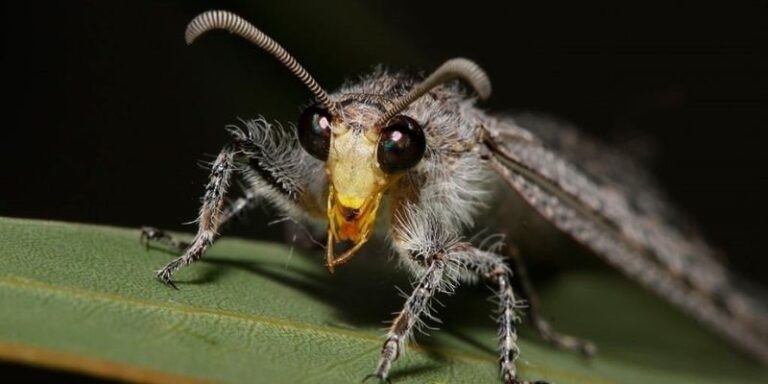Jurassic Era Insect Found at Arizona Walmart
The lacewing has not been seen in America since the 1950s.
By: Kirsten Brooker | March 20, 2023 | 549 Words

(Photo by Auscape/Universal Images Group via Getty Images)
In 2012, the director of the Insect Identification Lab at Penn State University, Michael Skvarla, spotted a giant insect on the wall of a local Walmart store. The bug’s appearance was so mysterious that he scooped it off the building, toted it through the store, and took it home. Nearly a decade later, Skvarla took the bug from his collection for one of his online entomology classes at the university. For years, Skvarla thought that the giant insect was an antlion. But, upon closer examination, the scientists realized that it was actually a super-rare Giant Lacewing. A Giant Lacewing is a large, flying, bug from the Jurassic era that was believed to have gone extinct in the 1950s. This revelation captured the attention of Skvarla and his class and opened the door for further investigation.
What Is a Giant Lacewing?
Scientifically named Polystoechotes punctatus, the Giant Lacewing has remained a mystery to entomologists for years. It was once commonly found in North America but was believed to have been wiped out from the Eastern United States in the 1950s. Reasons for their disappearance aren’t known for certain, but scientists believe increased pollution and artificial light could have played a role. Another possible explanation is decreased forest fire events, as lacewings rely upon post-fire environments to survive.

(Photo by: Avalon/Universal Images Group via Getty Images)
These insects are a cross between a moth and a fly. They are approximately two inches in both length and wingspan. Their wings are tent-shaped over their bodies and are a mix of black and brown. The rare insect’s antennae are clubbed or curved and are about as long as the bug’s head and thorax combined.
There are several types of lacewings, most not so rare as the Giant Lacewing. In fact, the Giant Lacewing dates back to the Jurassic Era and was discovered by examining old fossils.
Hanging Out at Walmart
Skvarla was regularly visiting his local Walmart to grab a gallon of milk when he spotted the insect on the store’s wall. It was interesting enough that he thought he should take it home. For nearly a decade, the bug was just a part of his collection, as he believed it to be a more common insect called an antlion. However, during an online Zoom class, Skvarla examined the bug and realized it was not what he thought it was.
Codey Mathis, one of Skvarla’s students, stated, “We were watching what Dr. Skvarla saw under his microscope and he’s talking about the features and then just kinda stops. We all realized together that the insect was not what it was labeled and was in fact a super-rare giant lacewing.”
At nearly two inches, the wingspan was too big to be an antlion. That’s when both Skvarla and his students realized they had a scarce and exciting find.
“I still remember the feeling. It was so gratifying to know that the excitement doesn’t dim, the wonder isn’t lost. Here we were making a true discovery in the middle of an online lab course,” Mathis continued. Skvarla is excited about the reminder that there is still so much to learn about the insect world.
















